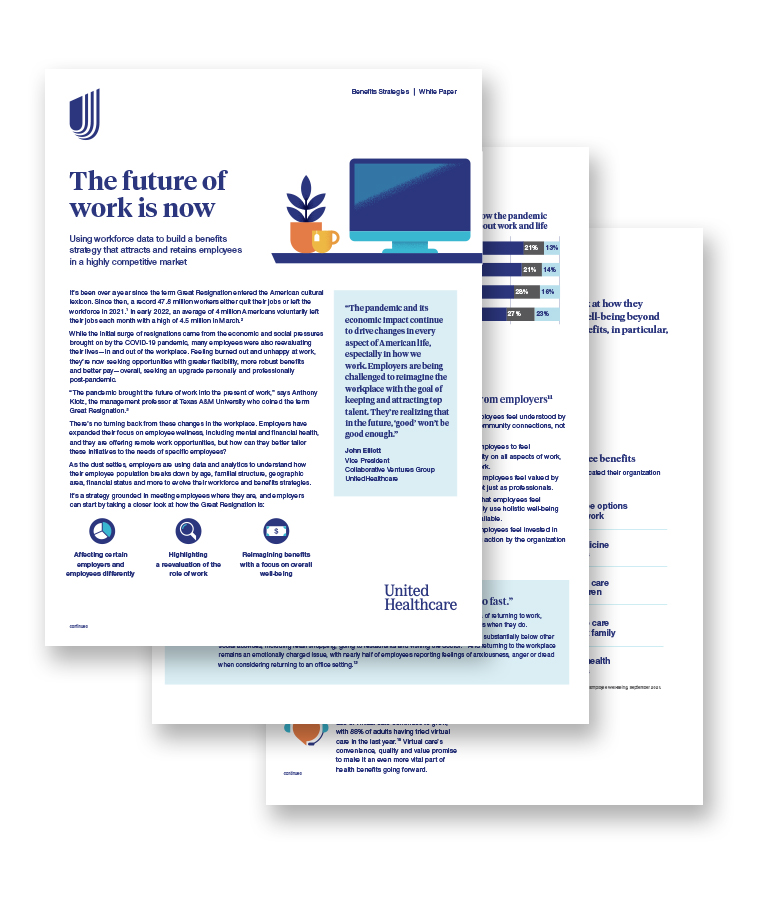White paper: The future of work is now
Using workforce data to build a benefits strategy that attracts and retains employees in a highly competitive market.

It’s been over a year since the term Great Resignation entered the American cultural lexicon. Since then, a record 47.8 million workers either quit their jobs or left the workforce in 20211. In early 2022, an average of 4 million Americans voluntarily left their jobs each month with a high of 4.5 million in March2.
While the initial surge of resignations came from the economic and social pressures brought on by the COVID-19 pandemic, many employees were also reevaluating their lives — in and out of the workplace. Feeling burned out and unhappy at work, they’re now seeking opportunities with greater flexibility, more robust benefits and better pay — overall, seeking an upgrade personally and professionally post-pandemic.
“The pandemic brought the future of work into the present of work,” says Anthony Klotz, the management professor at Texas A&M University who coined the term Great Resignation3.
There’s no turning back from these changes in the workplace. Employers have expanded their focus on employee wellness, including mental and financial health, and they are offering remote work opportunities, but how can they better tailor these initiatives to the needs of specific employees?
As the dust settles, employers are using data and analytics to understand how their employee population breaks down by age, familial structure, geographic area, financial status and more to evolve their workforce and benefits strategies.
It’s a strategy grounded in meeting employees where they are, and employers can start by taking a closer look at how the Great Resignation is:
- Affecting certain employers and employees differently
- Highlighting a reevaluation of the role of work
- Reimagining benefits with a focus on overall well-being
To read more of this white paper, click here.
For more information, please contact your broker or UnitedHealthcare representative.